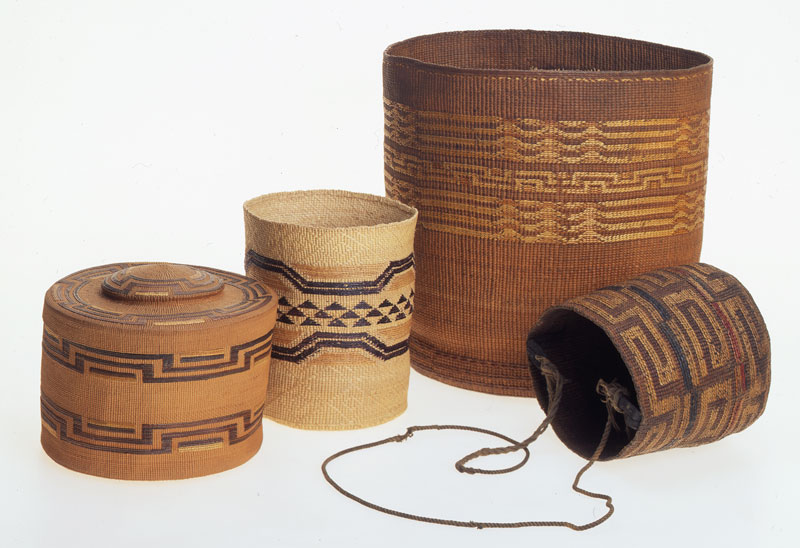Introduction
The coastal Tlingit people live on the beaches and islands in the southeastern Alaska Panhandle, tucked between the tidewater and the rugged coastal mountains. Heavy rainfall creates a luxurious rainforest environment and a temperate climate more like Seattle than Anchorage. The numerous islands create a protected waterway, called the Inland Passage, that permits travel and communication by water.
The Tlingits are the northernmost nation of the Northwest Coast peoples, who range from southern Alaska to the coast of Oregon. These coastal groups created luxurious societies founded upon the abundant resources of the forest and the sea.
To this day, the livelihood of the Tlingit people continues to be linked to the bounty of the natural world. The people maintain interests in both fishing and forestry, industries that have supported the Tlingits for centuries.

Tlingit women achieved fame for their finely twined spruce root baskets decorated with dyed grass applied in a technique termed "false embroidery." Wealthy basket collectors sought to augment their collections with Tlingit examples.

Baskets, pictured left to right
Trinket Basket
Tlingit peoples, Alaska, pre-1923
Sitka spruce (Picea sitchensis) root, unidentified grass, pebbles? Dye; H 14.5 x D 17.2 cm; 8946-11a & b, gift of H.J. Heinz
Basket
Ernestine Hanlon, Tlingit, Leineid (Raven-Dog Salmon) Clan, Hoonah, Alaska, 1995
Sitka spruce root (Picea sitchensis), unidentified grass, natural dyes; H 15.5 x D 14.0; 35989-1
Basket
Tlingit peoples, Alaska, collected 1904
Sitka spruce root (Picea sitchensis), unidentified grass; H 27.3 x D 28.2; 3167-57
Berry Basket
Tlingit peoples, Alaska, collected 1904
Sitka spruce (Picea sitchensis) root, unidentified grass, commercial cotton, dye; H 17.4 x D 13.8 cm; 3167-16
